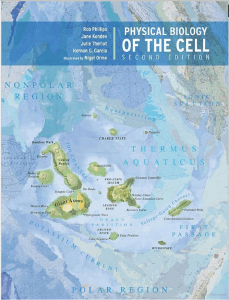Publications & Movies
Pubmed search:
Publications by Julie A. Theriot.
Life history of a single infecting Listeria monocytogenes
The sequence begins with the bacterium at the lower left corner of the cell, still in the membrane-bound compartment. It breaks free from the membrane and divdes several times before the movement begins. Once movement begins, the descendants of the initial infecting bacterium spread through the whole cell very quickly. Speeded up 900X.
–Julie Theriot & Dan Portnoy
Listeria monocytogenes moving in PtK2 cells
These pathogenic bacteria grow directly in the host cell cytoplasm. The phase-dense streaks behind the bacteria are the actin-rich comet tails. Actin-based motility is also used in cellular motility; this cell is using it’s cytoskeleton to crawl toward the lower right-hand corner. Speeded up 150X over real time.
–Julie Theriot & Dan Portnoy
Shigella flexneri associated with actin tails in PtK2 cells
These bacteria are unrelated to L. monocytogenes but move at similar rates and with similar behaviors. S. flexneri are substantially larger than L. monocytogenes and because of this the tails appear to be phase-lucent rather than phase-dense. Speeded up 300X.
–Julie Theriot & Marcia Goldberg
Shigella flexneri with a deletion for icsA infecting cells
Mutant S. flexneri with a deletion in icsA. These bacteria invade cells normally and grow normally in cytoplasm, but do not associate with actin and do not move. Instead, they form microcolonies in infected cells. Speeded up 200X.
–Julie Theriot & Marcia Goldberg
Candida albicans killing macrophages from the inside-out
Candida albicans, a fungal pathogen, being consumed by mouse bone marrow macrophages. After the macrophages engulf the yeast-like C. albicans, the fungus responds by rapidly growing a “germ tube.” This projection eventually pierces the macrophage from the inside, killing the attacking macrophage, while the fungus survives. Speeded up 900X.
–Julie Theriot & Julie Koehler
Salmonella typhimurium invading a fibroblast cell
Salmonella typhimurium invades Henle human epithelial cells. Contact of the bacteria on the host cell surface causes the host cell to send up huge actin-rich ruffles or “splashes” that engulf the bacteria as they fold back over. The bacteria are then trapped inside large vacuoles and replicate there. Speeded up 450X
–Julie Theriot & Jorge Galan
Vibrio cholerae colonizing human cells
Vibrio cholerae colonize the surface of HEp-2 human carcinoma cells. As more bacteria adhere to the host cell surface and secrete cholera toxin, th host cells begin to pump out water and salt due to constitutive activation of adenylyl cyclase. In the intesine, the water is pumped into the intestinal lumen, resulting in watery diarrhea. Speeded up 300X.
–Julie Theriot & Claudette Gardel
Listeria monocytogenes moving in Xenopus extract
Listeria monocytogenes bactera moving in a cytoplasmic extract. On the left is the phase-contrast sequence to show the bacterium moving. On the right is a simultaneously recorded fluorescence sequence, showing the distribution of fluorescently-labeled actin. Speeded up 60X.
–David Fung
Motility initiation of Listeria
How do Listeria start moving? This movie shows a bacterium’s journey from no actin to a full-fledged comet tail in Xenopus extract. Speeded up 60X.
–Susanne Rafelski & Julie Theriot
Keratocyte actin-based motility
A fish keratocyte, recently freed from the confines of a goby scale, crawls rapidly using actin-based motility. Speeded up 30X
–Rachael Ream, George Somero & Julie Theriot
